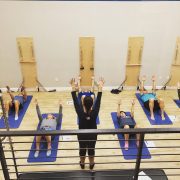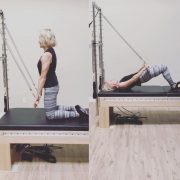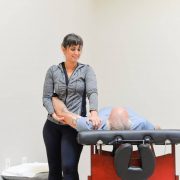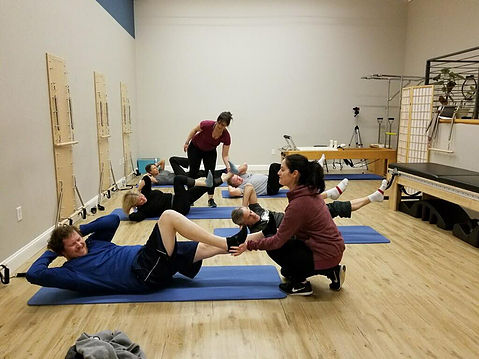Pilates has been around for about 100 years, and it still amazes me how many people have NOT heard of this incredible exercise method.
It was first created by Joseph Pilates and initially gained popularity among the dance community as a way to recover from and prevent injuries. But you don’t have to be a dancer to practice Pilates — or enjoy the benefits.
I’ve been incorporating Pilates into my physical therapy practice for the last 10 years and it’s been transformational for both my clients AND my practice. Every March, we join participants from all across the globe to share the love for the original work of Joseph Pilates. Over the years, much of Pilates has turned contemporary, but for one month – the Pilates community pays respect to his traditional, classical Mat exercises. This movement is known as March MATness, and anyone can join!
Pilates is a full body strengthening system that emphasizes breath, precision, coordination, and core strength — and it helps my clients connect to their bodies in a way that they haven’t been able to achieve with traditional strengthening methods.
Most of my clients are well into their 50’s and 60’s, and they love Pilates because it helps them have more energy, better balance, and improved strength and mobility. It allows them to participate in all the activities they love with more ease, and most importantly, significantly decreases the likelihood that their injury will come back.
Here are five reasons why Pilates was a missing link in my physical therapy practice, and why it might be the missing link to YOUR life-long fitness as well.
1. Pilates helps prevent back pain.
Once you hit 40, your risk of back injury starts to climb. We see a lot of folks with recurring back pain in our office. They’ve seen traditional physical therapists or chiropractors who get rid of their pain in the short term, but they aren’t able to keep it gone. Regular practice of Pilates is a safe and sustainable way to help keep your back pain-free. It focuses on core strength but also is a well-balanced exercise system — so it keeps your back feeling mobile in all directions — a missing link in most “back strengthening programs.”
2. Pilates strengthens your whole body, not just your core.
One of the keys to lifelong fitness is what I call “balanced strength.” That’s when each part of your body works together to produce the right amount of force, at the right time, to do your favorite activity in the most efficient way possible. Efficiency means you’ll be able to do it for a lot longer. I see lots of strong people in my office, but often certain muscles are working harder than others. And this can cause problems down the line. Pilates emphasizes full body strength that is coordinated — and this leads to a balanced body.
3. Pilates helps you get flexibility the right way.
Do you stretch your hamstrings every single day and find they just never get more flexible? It’s probably because you’re not stretching the right way — or maybe you don’t even need to be stretching them at all! What I love about Pilates is that it stretches your body in a dynamic way — with movement — so that muscles lengthen the right way and where they are supposed to. “Mobility before stability” is a phrase you will hear me say often, and it’s one of the keys to lifelong fitness.
4. Pilates puts very little stress on your joints.
Aging is a real thing and along with it comes arthritis. But it’s not a death sentence like most people are led to believe! The key to combating arthritis is maintaining a mobile and well balanced joint. When you optimize everything that surrounds your arthritic joints, your symptoms decrease. Pilates helps with all this and doesn’t cause any added stress. When your joints are happier, it becomes much easier to do your favorite activities – hopefully for life!
5. Pilates trains your nervous system.
Huh? Is that even a thing? Yes it is — and it’s almost ALWAYS a missing link that I see for people who’ve been at a certain activity for a really long time and then suddenly things start breaking down. They start experiencing pain when they never have before. If you don’t train your nervous system, it gets lazy, and that is how compensations develop in your body. Pilates helps with this because it is a mind-body exercise that emphasizes balanced strength and coordination. Your nervous system can’t get lazy when you do Pilates!
If you’re not yet incorporating Pilates into your fitness or rehab routine — what are you waiting for?
Check out our Pilates 101 Get [Your] Back to Health Program. This is our one-of-a-kind 8-session program that delivers safe, yet highly effective Pilates-based core strengthening exercises that are easy on the joints, and help improve your flexibility and posture. Apply here!









